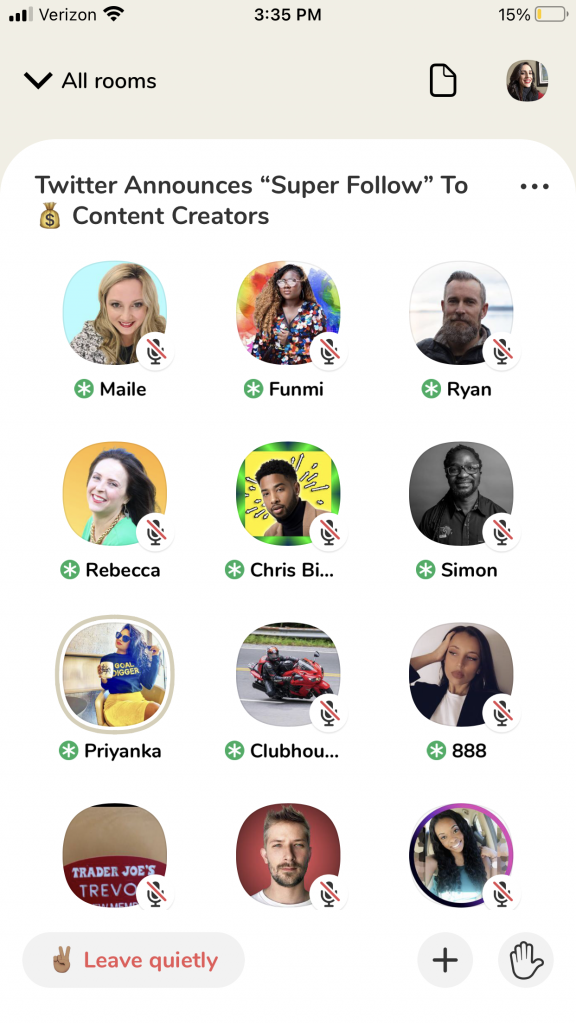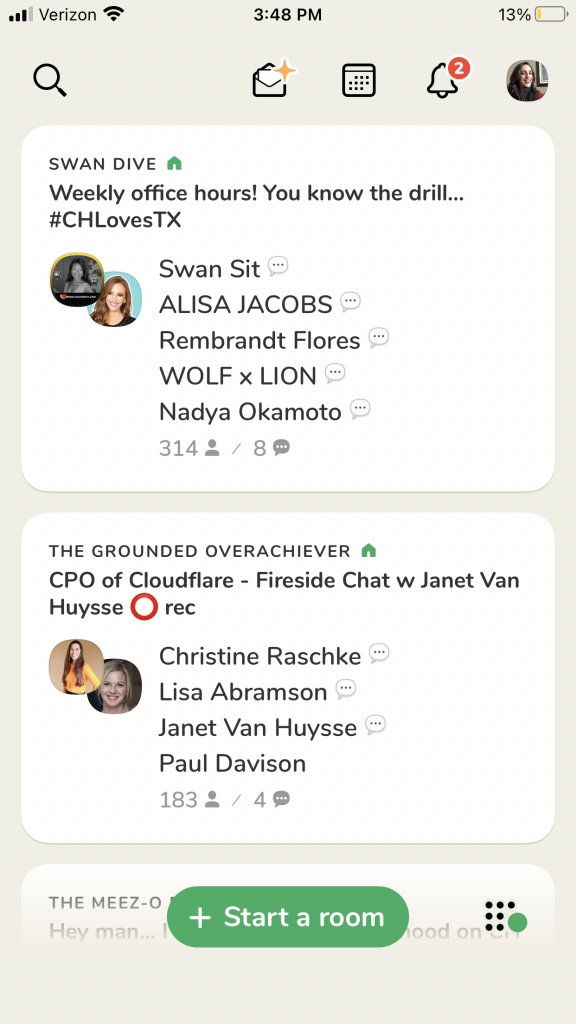Lee Groeger - 02/25/2021
Disclaimer: As of this writing, Clubhouse is in beta-testing phase. That means any number of these details can, and in all likelihood will change as the app moves through the various stages, prior to and after going public.
Clubhouse is the audio app that’s taken the social media universe by storm this year, attracting heavy hitter early adopters like Oprah, Ashton Kutcher, Kevin Hart, Mark Cuban, Tiffany Haddish, Elon Musk, and Drake, to name a few. But what is it? To get a pretty accurate mental picture, imagine the AOL chat rooms of the 90s, but entirely voice-and-audio-based. There’s a little more to it than that, but keep that concept in mind as you read on. So, what’s all the fuss about, and more importantly, what do you need to know about it before you jump in?
Like any good club, it’s exclusive.
The app currently requires an invitation from a current member, so you have to know someone to get in. Membership is also limited to users with Apple devices, whittling down the pool of potential members even further—and that exclusivity is part of what’s generating so much public interest. When Clubhouse is open to the public and they release an Android version, growth will take off to higher levels.
It’s all about the rooms.
As with any house, Clubhouse is comprised of rooms. À la AOL chat rooms, here, rooms are basically virtual, audio-based conference rooms where friends, colleagues, personal and professional acquaintances, and strangers alike observe and participate in discussions about any and every topic imaginable. Users can drop in and out of transient rooms, as they please, to listen to speakers “on stage,” ask questions, and potentially be invited to the stage to actively join the chat. You can also ping a user you’re connected to if you want to alert them about a room discussion you think they might want to join.
There are different kinds of rooms: Open Rooms can be discovered and joined by anyone on the app, Social Rooms are only open to those in the moderator’s network, and Closed Rooms are invite-only. Rooms range from smaller, more casual chats among users who know each other to larger discussions featuring expert panels attended by thousands of listeners. The exciting part about some gatherings is that you never know what business mogul, celebrity, or other person of interest might make an appearance—or whatever the ‘audio app’ equivalent of that is (APP-EARance? APP-HEARance? A tangent for another day).
Mind the company you keep.
Clubhouse’s algorithm is set up to funnel information to you based on the people and topics in which you show interest, so selecting who you follow can make or break your experience and your status. By default, you will be notified when someone you follow takes the stage or schedules an event—essentially a calendar listing for an upcoming room—but you can choose to set individual notifications for each person you follow to keep things more manageable and streamlined.
When you’re in a room, pay attention to the moderators, speakers, and attendees and follow those who pique your interest. If you notice someone has been in several of the same rooms as you, get to following! At the very least, they have shared interests, and there may even be a possibility for collaboration.
 Deck your hall[way].
Deck your hall[way].
The home page is the main feed, known as the “hallway,” where recommendations are customized to you based on your interests and the people you follow. To help customize your experience—because, really, only you can—consider following some of the industry leaders or trendsetters in your universe of interest. Take a look at who they’re following, too, and proceed accordingly. Because who you interact with informs your room suggestions, you don’t want to get too liberal with your follows, but you can always unfollow people if you start to see your hallway recommendations going off-course.
It’s off the record (sort of).
Nothing said in the presence of others is ever really off the record, but at least for now, Clubhouse is trying to keep all in-platform activity within its digital walls. Once a room has closed, it’s gone. Unlike its predecessors, the app leaves no record of what’s said; it’s real-time, one time. The terms of service go so far as to forbid the recording of audio in a room unless everyone there agrees to it—a feat more easily accomplished in a room of several users, but almost certainly not several hundred or thousand.
Beware the rabbit hole.
There are so many Clubhouse conversations happening simultaneously, 24/7, it’s easy to fall down one rabbit hole after another. In fact, its immersive, addictive nature is probably the leading complaint about the platform. To that end, it’s important to set time and strategy parameters for yourself to stay focused and productive. One way to do that, logistically speaking, is by adjusting your notification frequency to one of the lower settings so you’re not receiving alerts at every second of the day.
Bio is life.
Your Clubhouse bio is your calling card. It’s meant to be as dynamic as it is informative, and is as, if not more important than any other component in the mix. You’ll often see bios structured using bullet points, peppered with emojis, offer links, and details running the gamut from preferred contact method to latest book recommendation.
When you appear as a search result in the Explore section, only the first line of your bio is displayed in the results. So, much like a press release, news headline, or online dating profile, you need to catch your audience’s attention right in that first line. Also, think about the keywords you would want people to use to discover you and populate your bio with those words. And finally, there are no in-app DMs, so the real magic happens when you connect with people outside the platform. To maximize the platform’s networking potential, it’s standard—and wise—to include your Twitter and Instagram accounts in your bio.
In closing.
There are three things about Clubhouse I really appreciate. First of all (as my two-year-old now loves to start sentences), it fosters an environment where people with diverse backgrounds from all over the world can join together around shared interests. On top of that, the real-time, fleeting nature of the format keeps conversations energized and feeling a little bit special, at least at this early stage. And finally, because everyone there understands the ultimate point of Clubhouse is to connect and exchange knowledge, despite the exclusive vibe, business networking is welcome and embraced.
Have more questions about Clubhouse, or need help pulling together a strategy to get started? Let’s chat.
